Friends of Cañada de los Osos Ecological Reserve
A Program for the Birds
by Henry Coletto
This project began with an idea and a
committed volunteer. Bob Clement is a retired biology teacher who has
given lectures and guided field trips all over California. Bob has been
a volunteer at Cañada de los Osos since its conception.
The first part of the work started at
a local juvenile facility. Over 50 bird boxes were built by students
at the wood shop. Then came the fun part, with youth and adult volunteers
from local elementary and high schools helping to put the boxes up at
the ecological reserve. The project doesn't stop there—boxes are checked
several times during and after the nesting season to keep them clean
and to monitor nesting success. The project provided nesting sites for
western bluebirds, tree swallows, violet green swallows, oak titmouse,
house wrens, and an acorn woodpecker. Kids got to see the variety of
materials birds collected to build the nest, including grasses and a
variety of feathers. Feathers from red-tailed hawk, wood ducks, and
mallards were among those keeping the chicks warm.
Thanks to all that took part in this project.
Each year over a hundred birds use these boxes—a real contribution
to the wildlife found at Canada de los Osos Ecological Reserve.
2014 Cañada de los Osos Nesting Bird Survey
by Bob Clement
Erratic weather and a persistent drought proved to be a problem for many nesting birds this
year. Alternating cold and hot periods disrupted migration patterns and nesting times. Drought
and heat brought about a spectacular flower bloom, but it was short-lived and the flying insects
associated with the bloom was also short-lived. Abandonment of eggs was higher than usual,
although abandonment of young was probably below average. Predation rates were also higher
than in other years, probably due to the added exposure of parent birds as they flew more for
meager insect catches during the dry periods. The most accurate nesting data comes from the
many easily accessed boxes available for cavity-nesting birds and the usual building nesters,
but other birds are included by way of general observations.
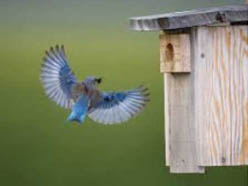 Western Bluebird |
 Tree Swallow |
 House Wren |
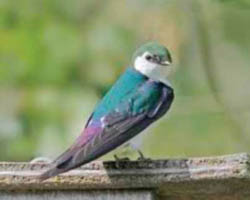 Violet-greeen Swallow |
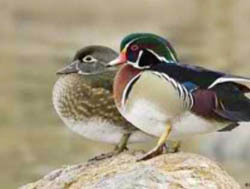 Wood Ducks |
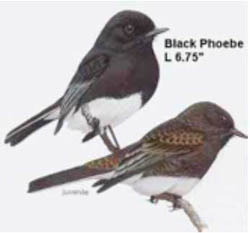 Black Phoebe |
 Wild Turkeys |
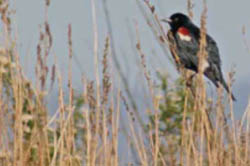 Tri-Colored Blackbird |
Turkeys, as usual, did pretty well, although there did seem to be more unmated hens this year. Maybe this was influenced by what seems to have been an earlier dispersal outward from the valley this year. Poults are finding lots of grasshoppers and our native grass fields are providing seeds. The most unusual sighting was of 3 hens and a dozen+ poults killing a 34-inch king snake.
Tri-colored Blackbirds nested at Tooth Lake again this year. Numbers were way down, in keeping with a state-wide decline experienced by this species of concern. Persistent drought has forced livestock growers to make more use of marginal land, which has eliminated nesting opportunities for these birds. Nest predation by Cattle Egrets and Black-crowned Night Herons elsewhere have decimated some colonies. Neither of these predators inhabit the Reserve.
Mourning Doves seem to be abundant and an early influx of many Band-tailed Pigeons are presently feeding on a bumper crop of elderberries.
California Valley Quail have produced their second families of the year.

Mourning Dove
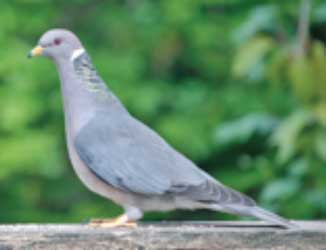
Band-tailed Pigeon

California Valley Quail